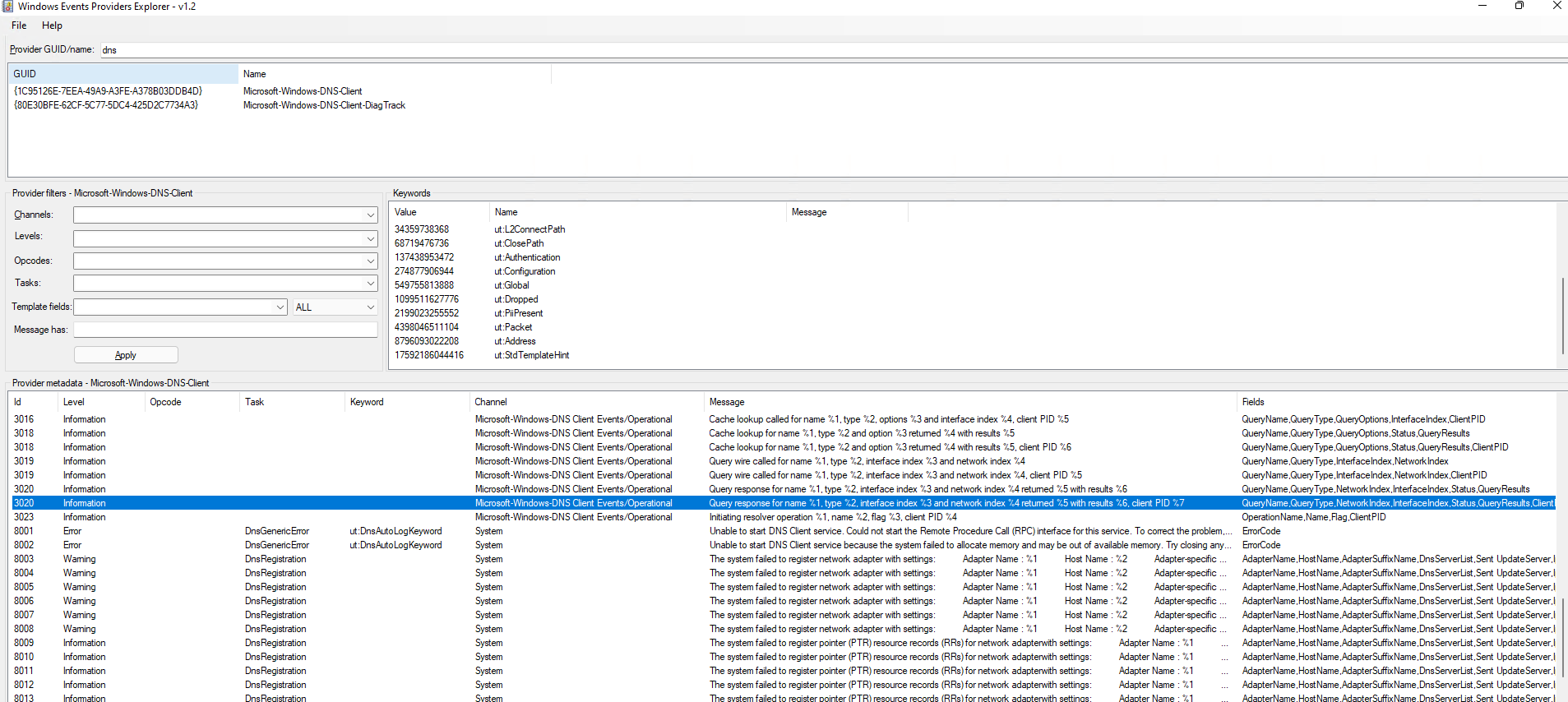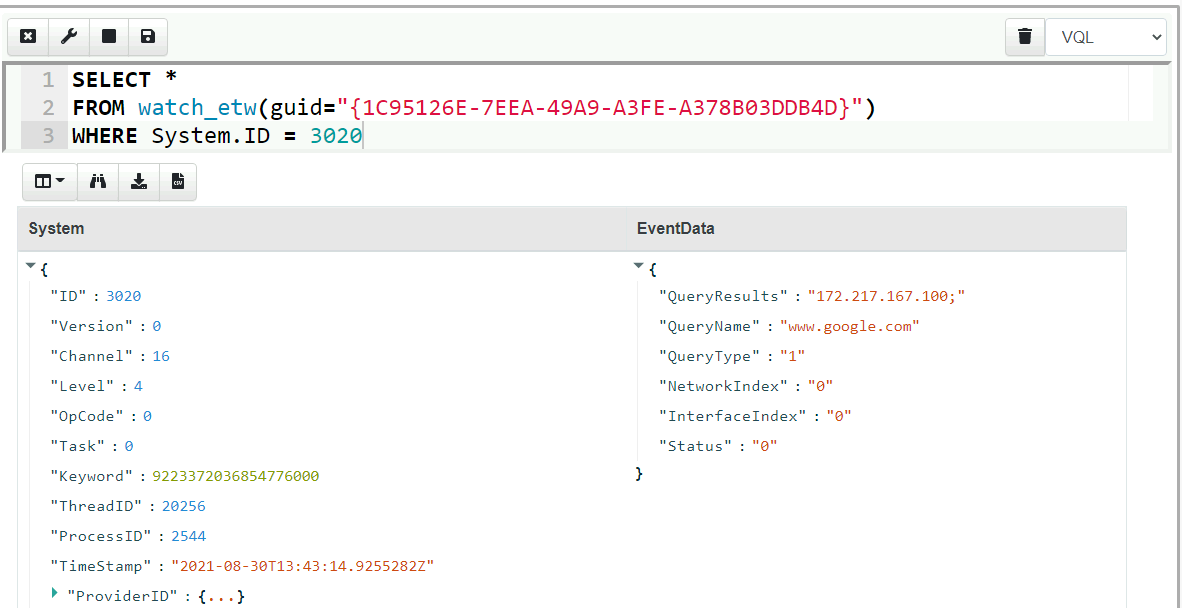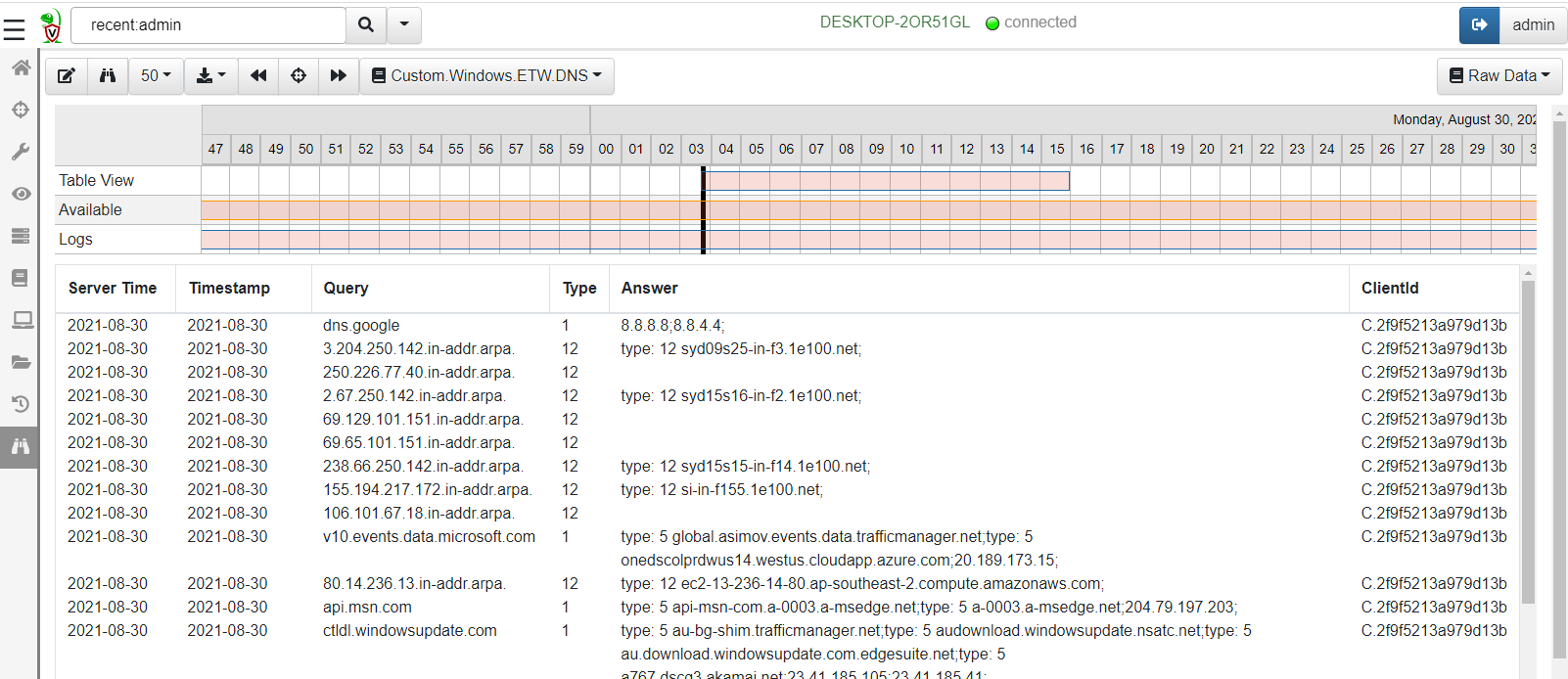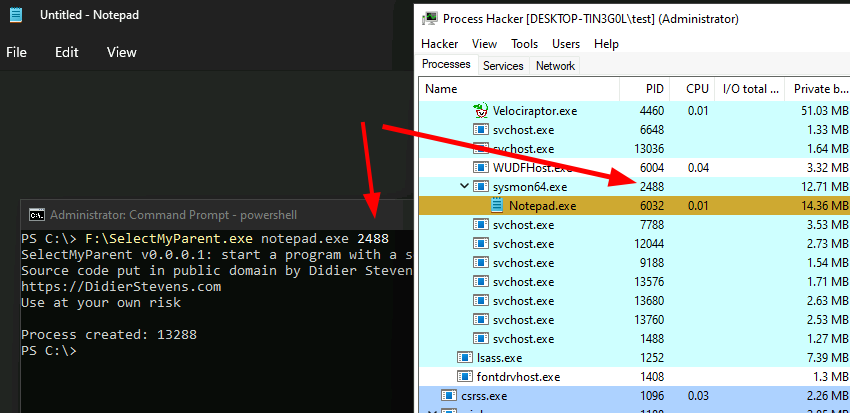<!-- .slide: class="title" --> # Event Tracing For Windows ## Bring in the big guns! --- <!-- .slide: class="content" --> ## Event Tracing for Windows (ETW) <div class="container small-font"> <div class="col"> * Framework Built into windows * Matches Consumers to Providers * Forms the basis of the windows event logs * Traces can be either written to file or read directly by consumers. https://docs.microsoft.com/en-us/windows-hardware/test/weg/instrumenting-your-code-with-etw </div> <div class="col"> <img src="ETW-architecture.png" style="bottom: inherit" /> </div> </div> --- <!-- .slide: class="content" --> ## How does ETW work ? * Various software packages throughout the Operating System register themselves as an Event Provider using a unique GUID * As the software operates, various logging points within the code send "Events" to the provider. * The operating system simply matches consumers with providers * A consumer registers interest in a particular provider using the GUID * Note that if no consumers are interested ETW logging points are essentially free. --- <!-- .slide: class="content" --> ## ETW Providers * Any software can define an ETW provider * There is no consistency - some providers are detailed - some not * Discoverability is an issue! Some providers are less documented * It is sometimes possible to infer a lot of providers from their manifest files. * There are some public efforts to better document the available providers. --- <!-- .slide: class="content" --> ## View ETW providers registered <div class="small-font"> * Some information can be gathered by using the command ```powershell logman query providers ``` </div>  --- <!-- .slide: class="content" --> ## Monitoring the ETW stream * As an example, we will illustrate how to follow an ETW stream with the `watch_etw()` plugin. * VQL allows Velociraptor to attach to an ETW stream and filter, enrich or respond to events directly on the endpoint. * We can use [WEP Explorer](https://github.com/lallousx86/WinTools/tree/master/WEPExplorer) to explore interesting sources of ETW events. --- <!-- .slide: class="full_screen_diagram" --> ## WEP Explorer shows the different events available  --- <!-- .slide: class="content" --> ## Monitoring for DNS sources  --- <!-- .slide: class="content" --> ## Collecting DNS lookup from the entire fleet  --- <!-- .slide: class="content" --> ## Unique ETW sources: Process parent spoofing * ETW can provide information that is not normally available - for example reliable process parent/child relationships. * Many detections rely on parent/child relationships * The Windows CreateProcess() API allows the caller to specify the parent of a process. * This means it is trivial to spoof the parent process without any privileges - this is a very effective way to defeat parent/child based detections. --- <!-- .slide: class="full_screen_diagram" --> ## Process Spoofing * SelectMyParent.exe is a free to tool test this API but any software can use the API https://blog.didierstevens.com/2009/11/22/quickpost-selectmyparent-or-playing-with-the-windows-process-tree/ <img src="select-my-parent.png" style="height: 400px;" /> --- <!-- .slide: class="content" --> ## SelectMyParent.exe  --- <!-- .slide: class="full_screen_diagram" --> ## Can sysmon detect it? ### No unfortunately… <img src="sysmon-process-spoofing.png" style="height: 400px;" /> --- <!-- .slide: class="full_screen_diagram" --> ## Cobalt Strike process parent spoof * Parent Process Spoofing and Session Prepping with Cobalt Strike https://www.youtube.com/watch?v=DOe7WTuJ1Ac <img src="cs-training-process-spoof.png" style="height: 400px;" /> --- <!-- .slide: class="full_screen_diagram" --> ## Microsoft-Windows-Kernel-Process provider <img src="Microsoft-Windows-Kernel-Process.png" style="height: 400px;" /> --- <!-- .slide: class="full_screen_diagram" --> ## Windows.ETW.DetectProcessSpoofing https://docs.velociraptor.app/exchange/artifacts/pages/windows.etw.detectprocessspoofing/ <img src="Windows.ETW.DetectProcessSpoofing.png" style="height: 400px;" /> --- <!-- .slide: class="full_screen_diagram" --> ## Installing parent spoofing detection in Velociraptor <img src="Windows.ETW.DetectProcessSpoofing_results.png" style="height: 400px;" /> --- <!-- .slide: class="full_screen_diagram" --> ## False positives - UAC elevation <img src="Windows.ETW.DetectProcessSpoofing_fp.png" style="height: 400px;" />